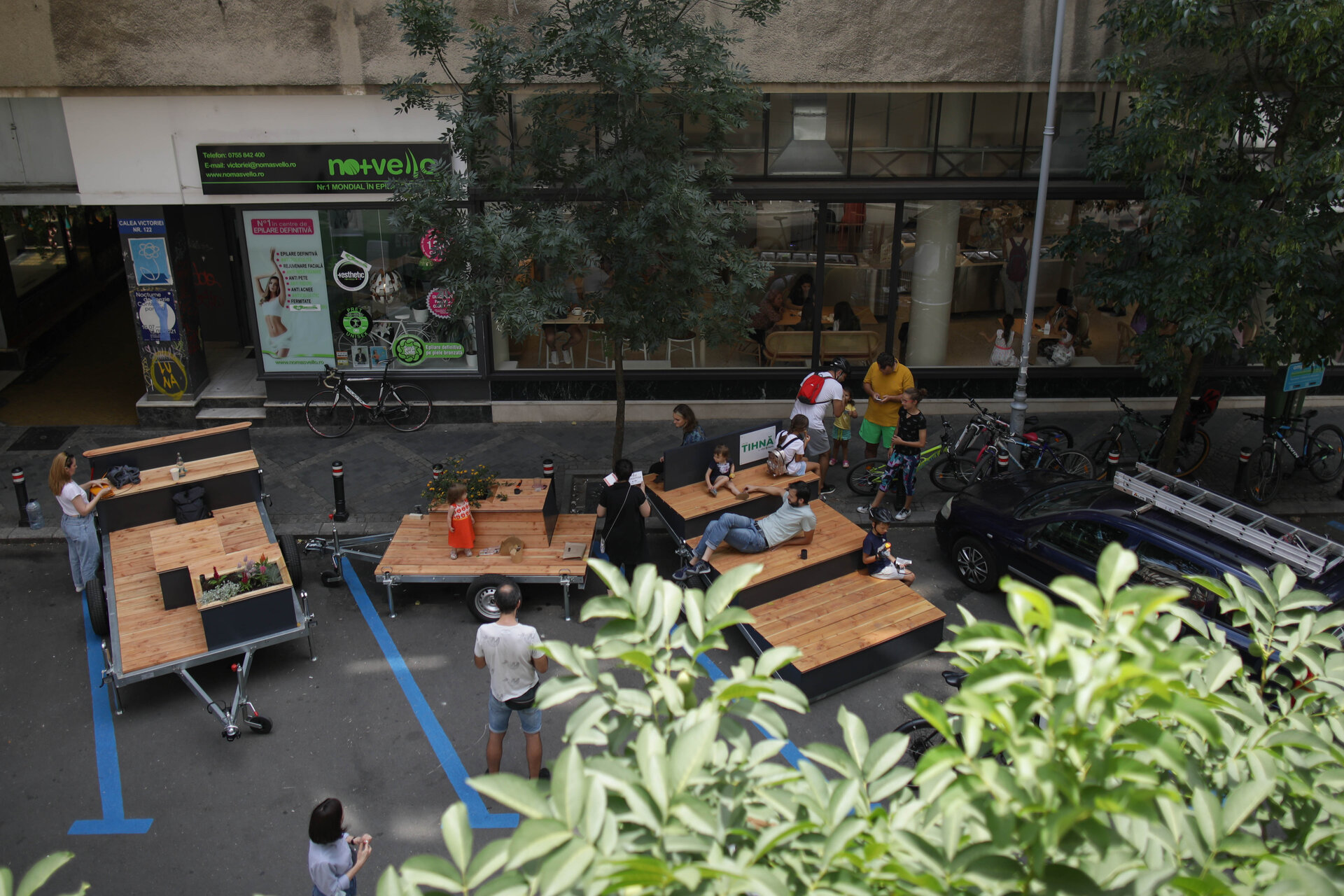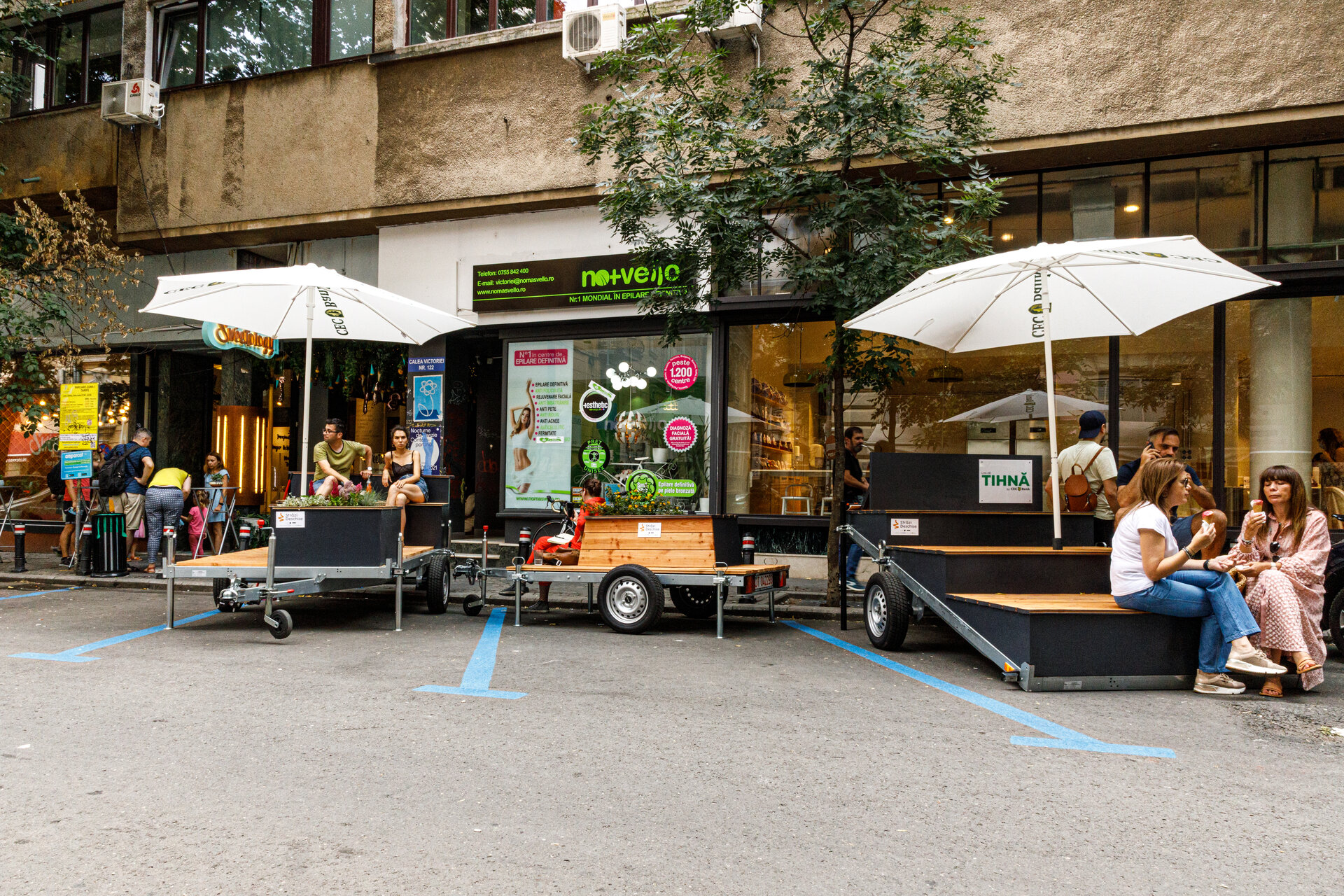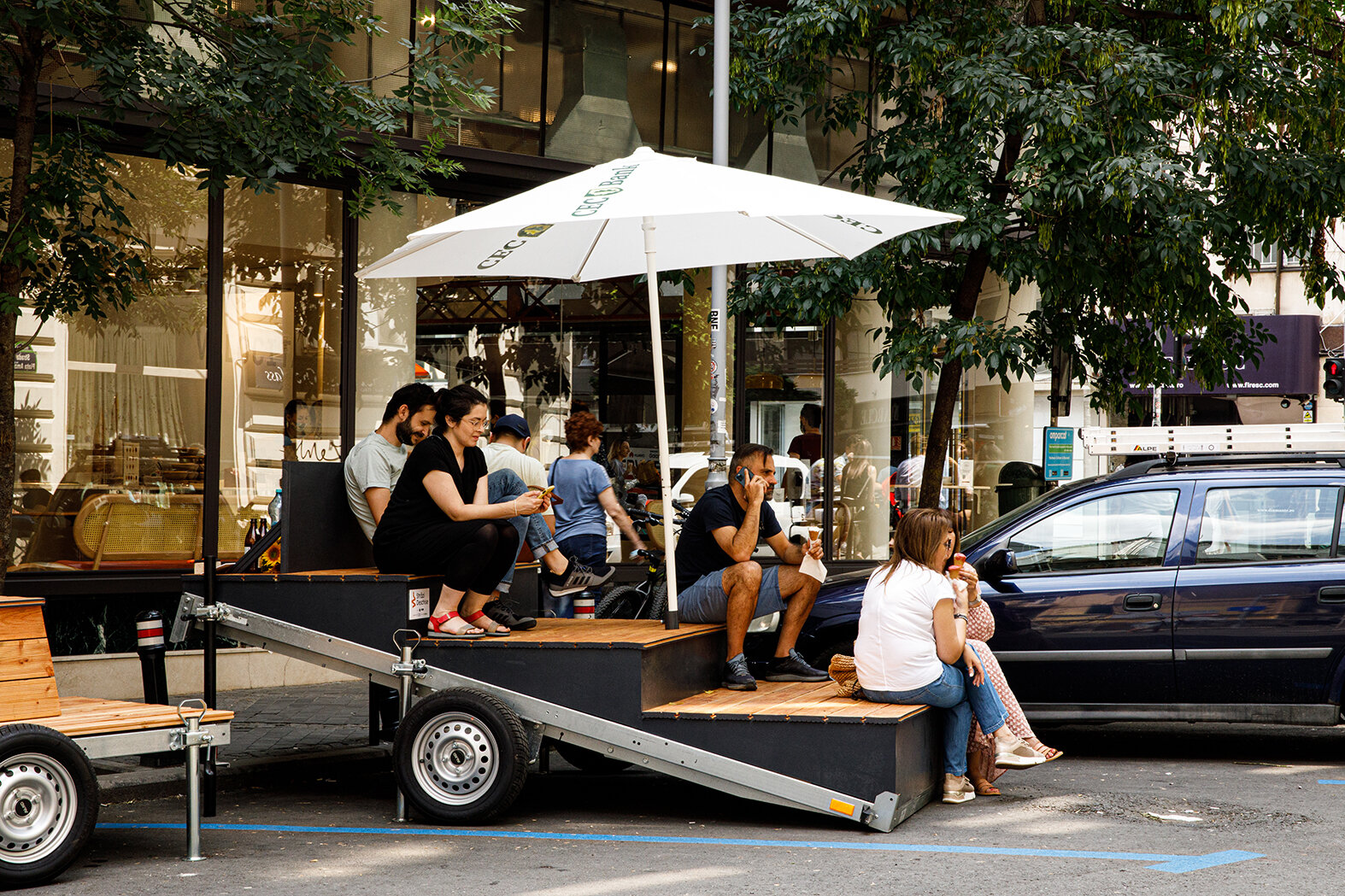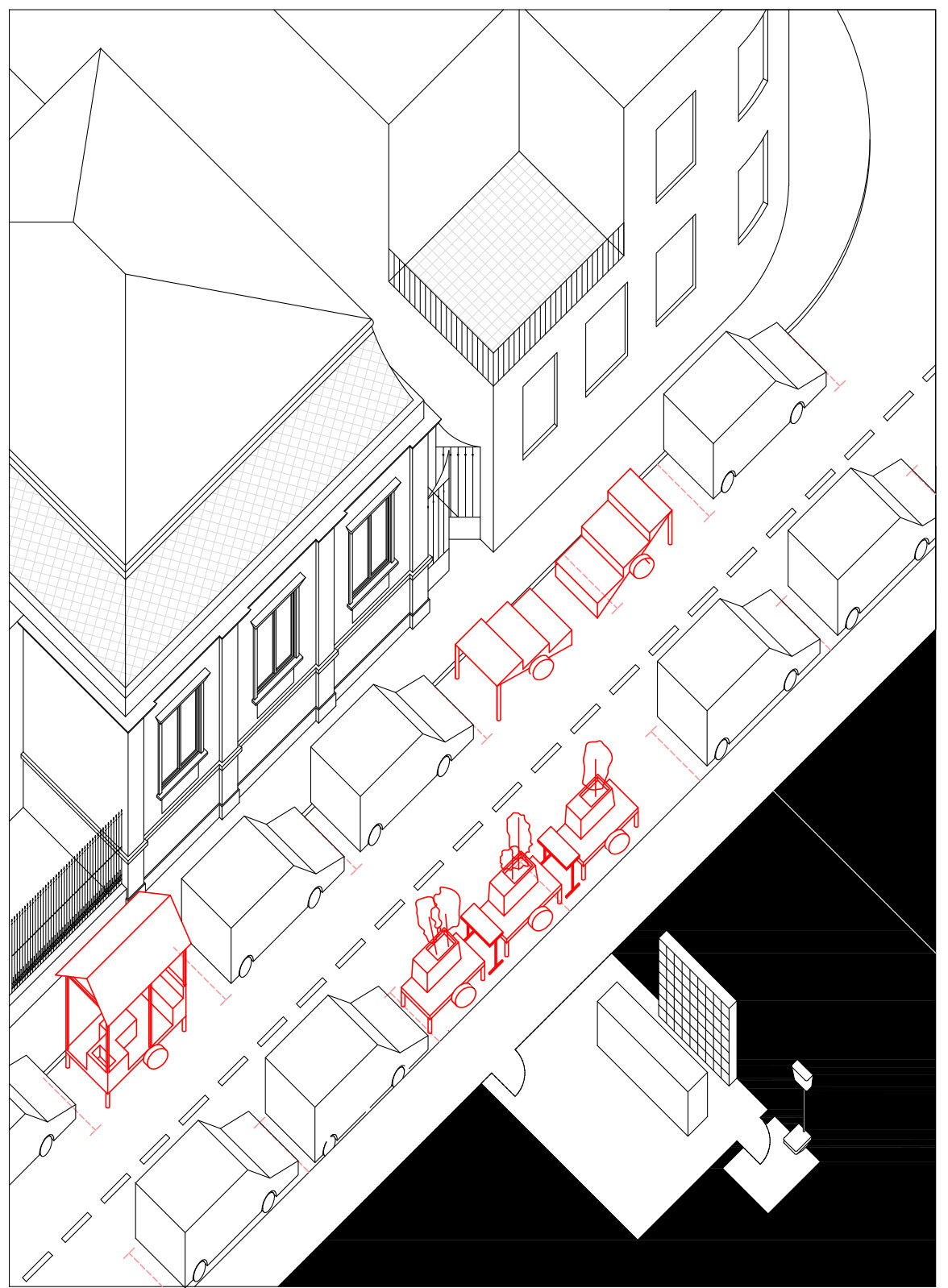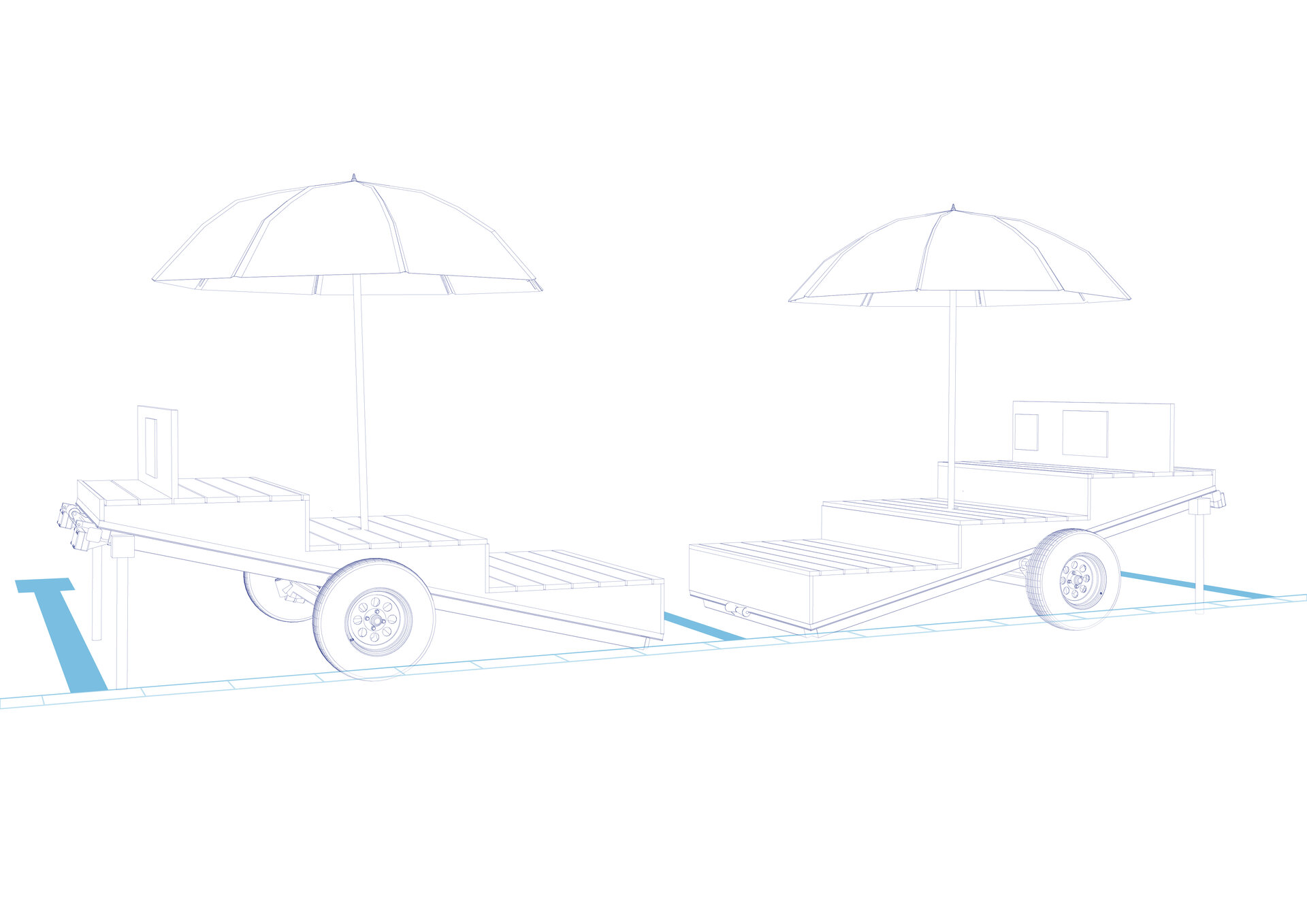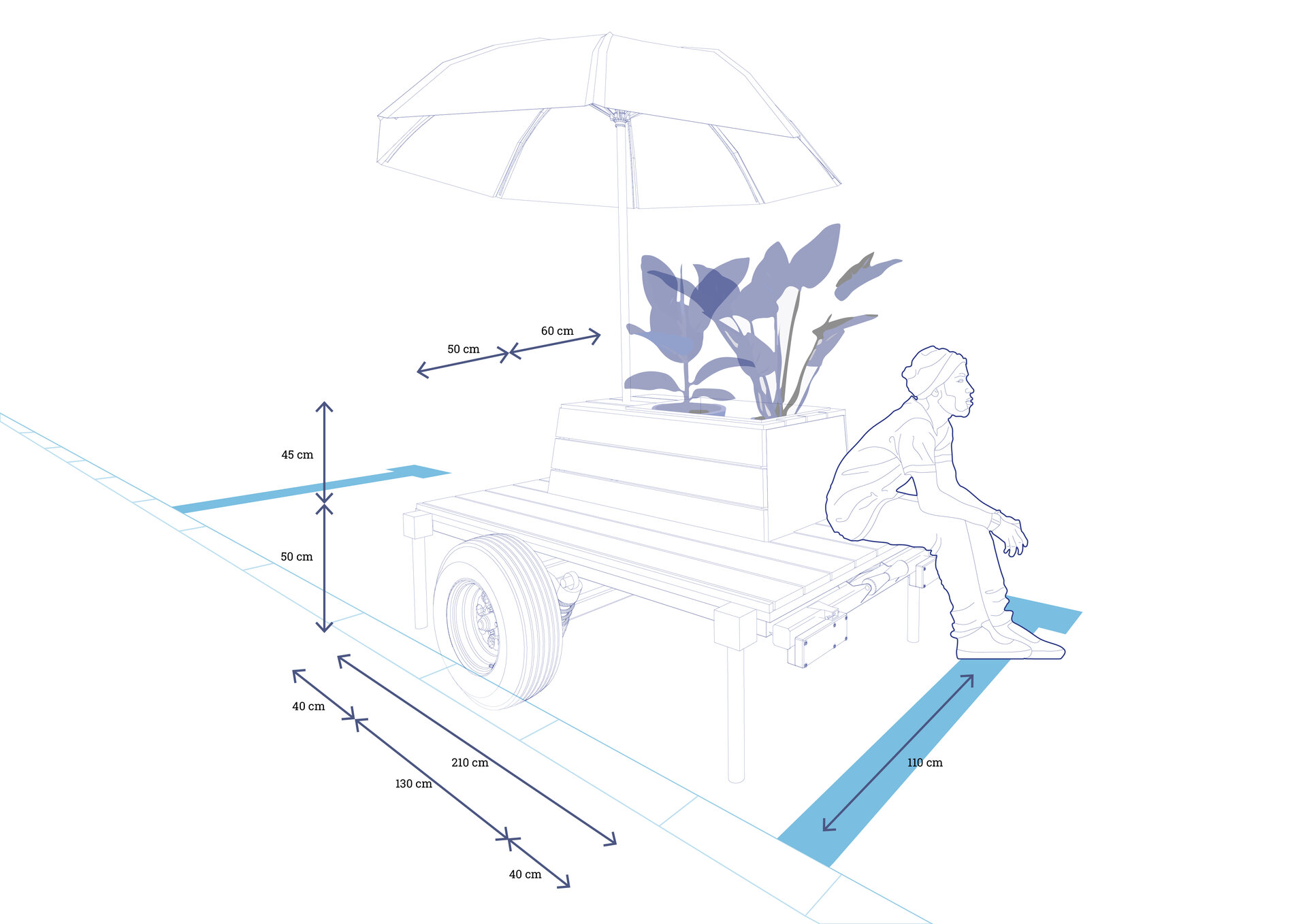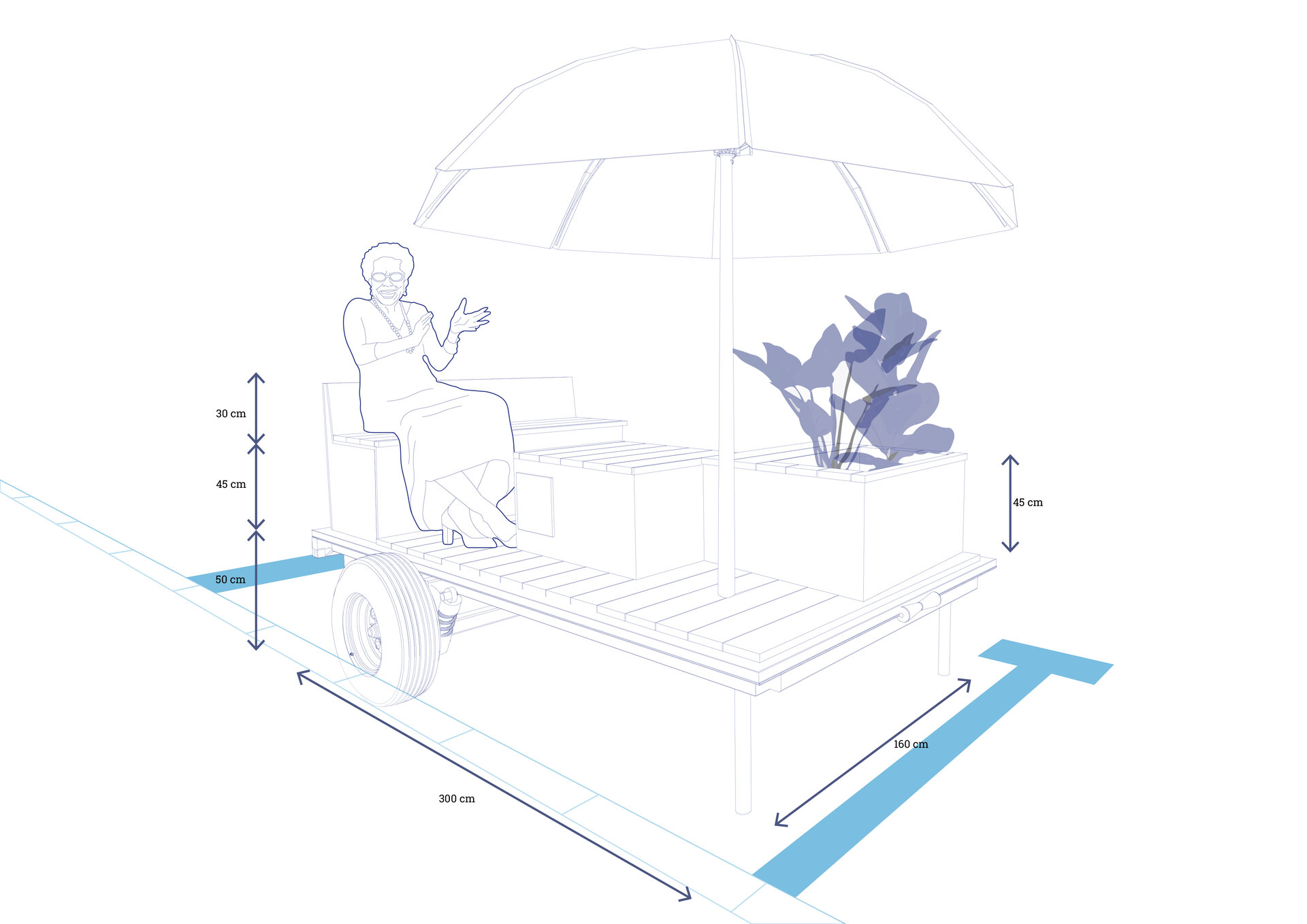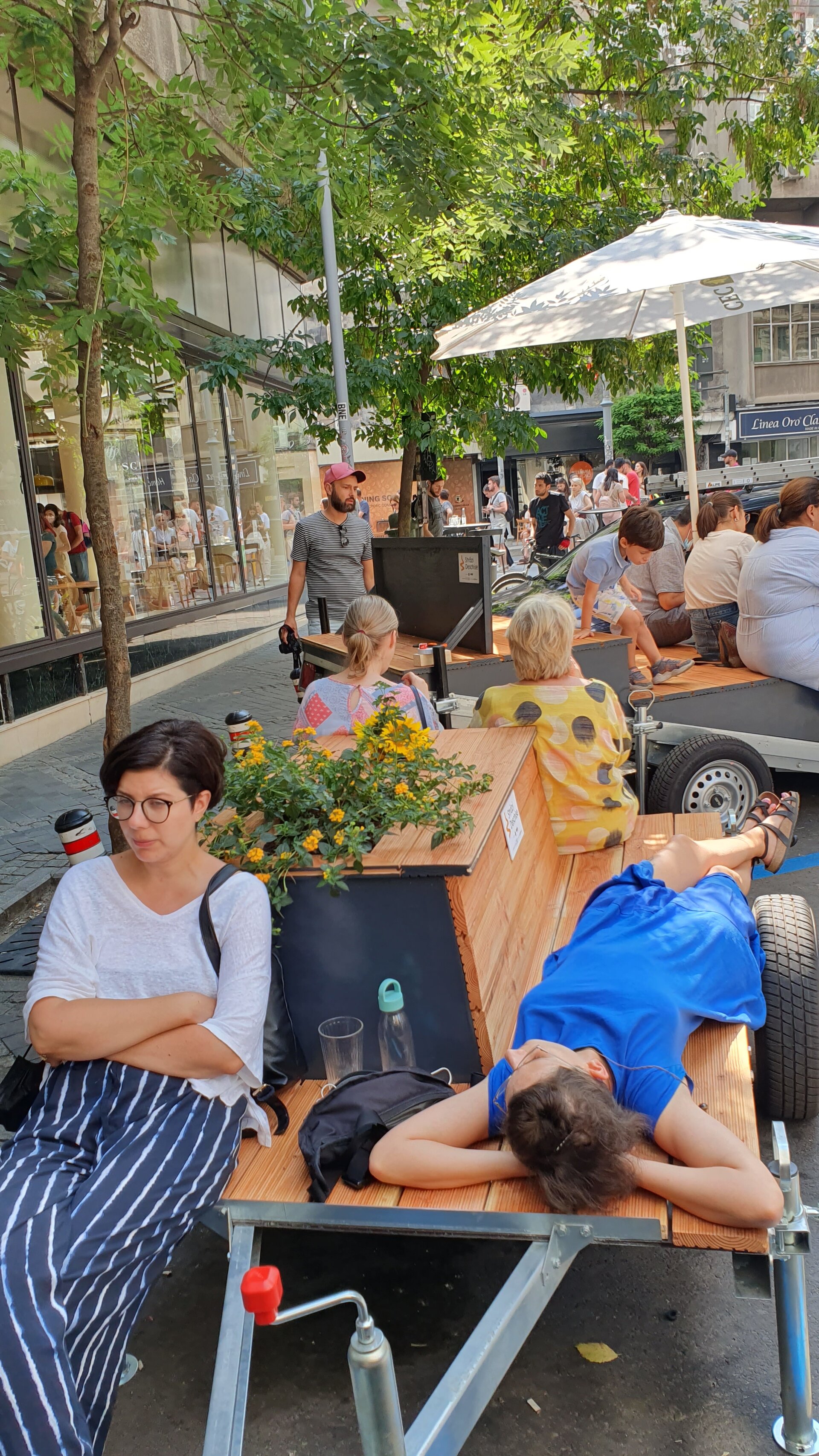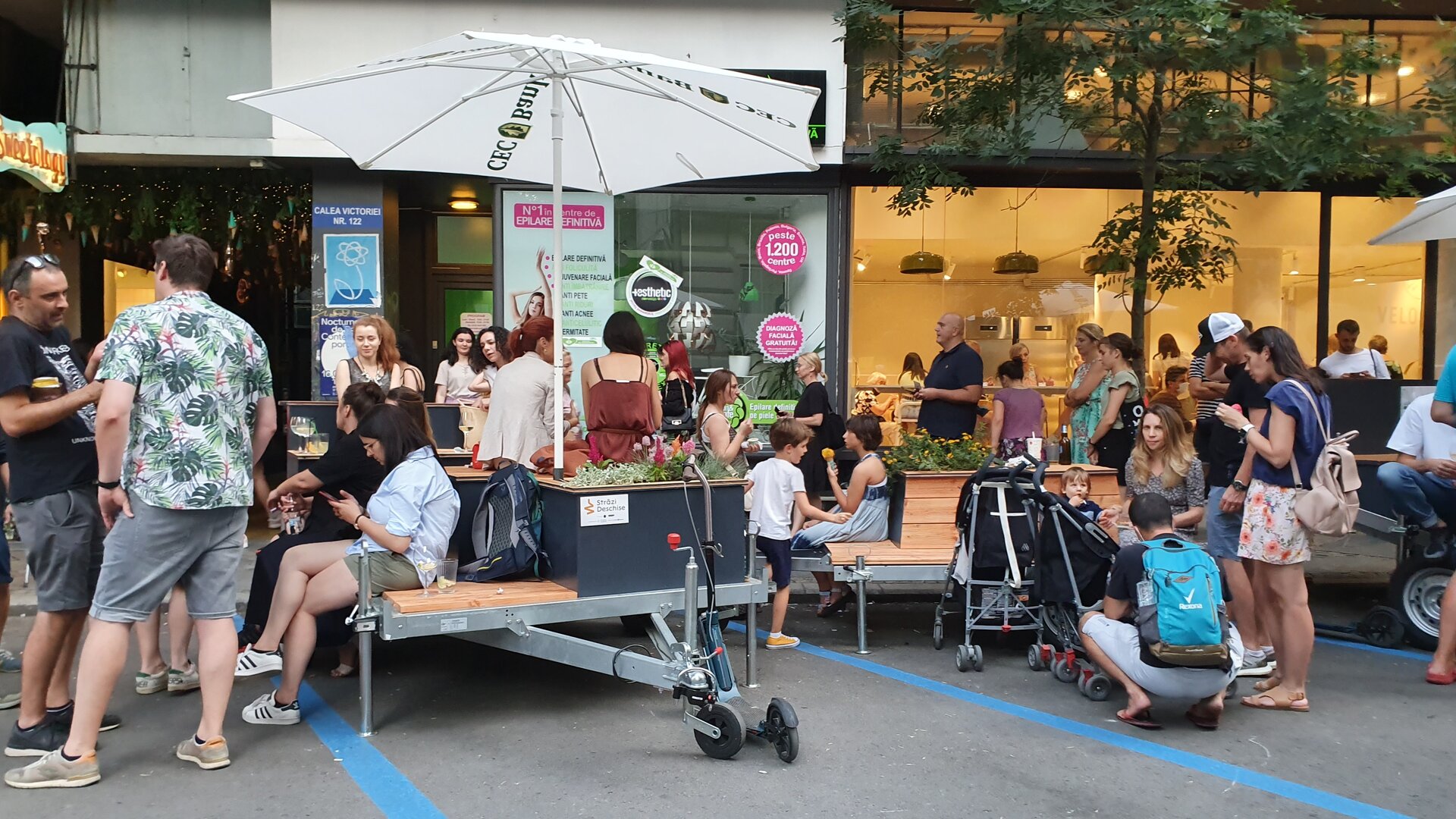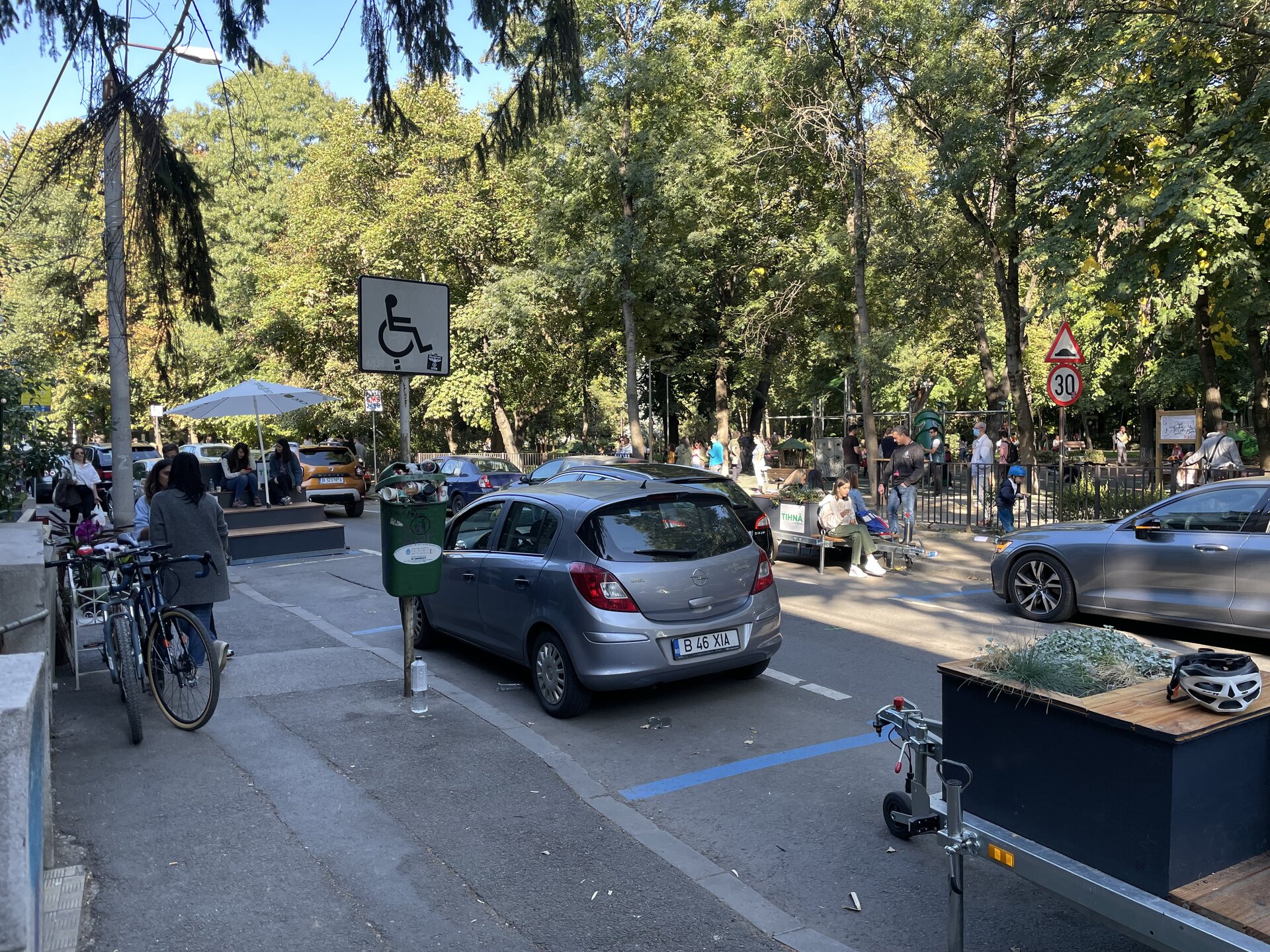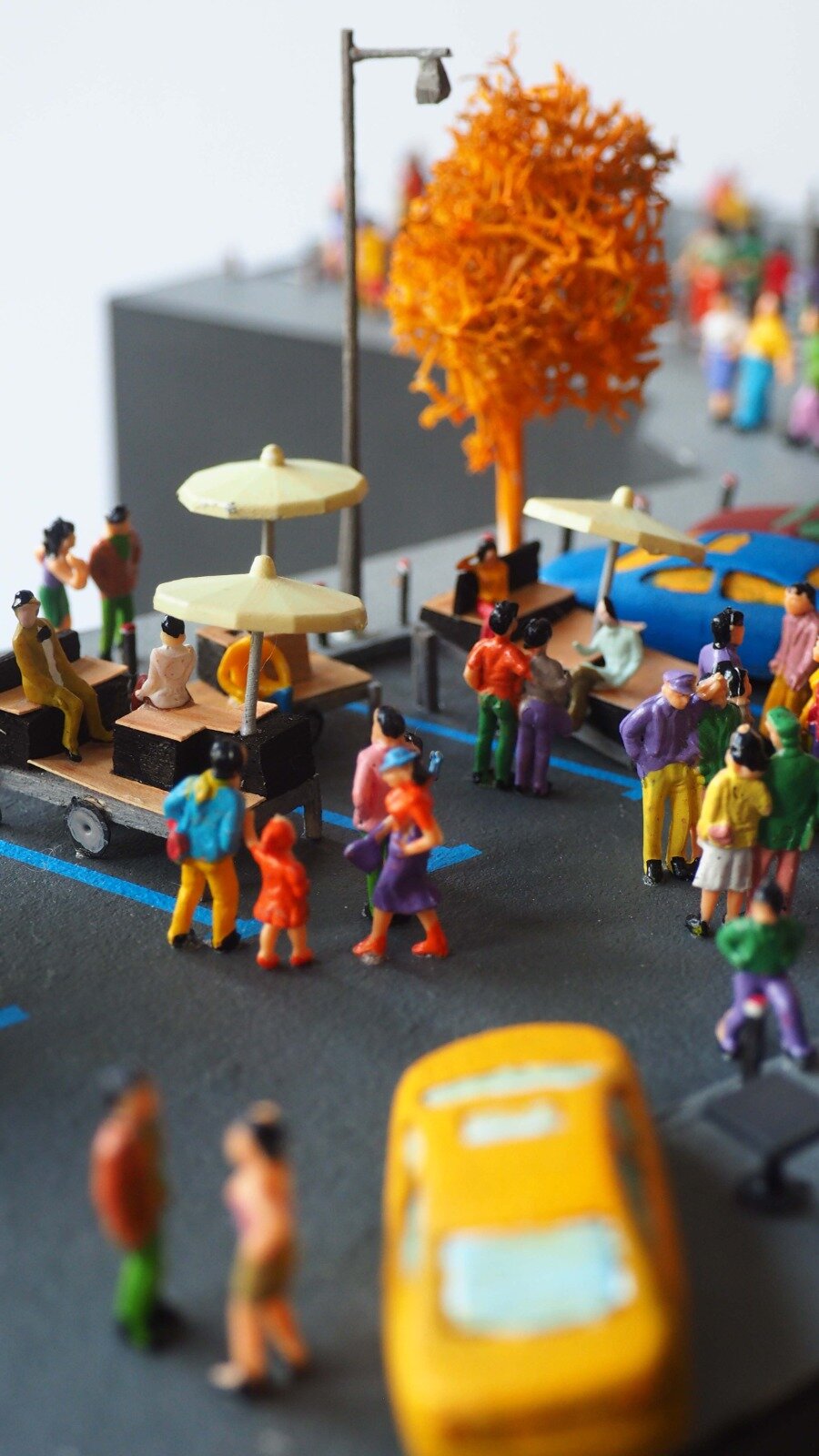
- Nomination for the “Built Architecture / Architecture and Public Space” section
A Place to Catch One’s Breath- București
Authors’ Comment
A Place to Catch One’s Breath
The first parklets used in Bucharest to expand pedestrian space on the curb-side parking area.
The introduction of parklets into the urban landscape of Bucharest is a gesture that opens up new spaces for pedestrians. The street is encouraged to become a public space, not just a passageway.
Parklets are a recent invention, originating from North America. They emerged from a simple question: Can a parking space be something else?
In most cases, in the city, a parking lot is a minimum of 12.5 square meters of public space that is, however, not part of the pedestrian or roadway and is reserved, whether it is occupied or not, for a vehicle. Hence the question: instead of a car, can the parking space be occupied or used by something or someone else? Can it be rented by the hour for other activities? Can it be furnished with chairs, tables, flowerpots, commercial stands, trash bins, campaign tents, or guard booths?
All the above are common occupants of the sidewalk, but according to current legislation, they do not have a legal basis to occupy the roadway.
To bend this rule, we found a legal loophole. We bought and registered three trailers, which we then transformed into mobile places to sit. These are now urban furniture, legally parked, with a subscription. They are also irrefutable examples of the recovery of public space, annoying if not all together dangerous in the eyes of authorities in the way they exploit legal loopholes and especially in the precedent they create.
Over time, the three furnished trailers have migrated to various locations in the city. On the street level, they were welcomed with joy by supporters of a pedestrian city and with resentment by advocates of the car-centric city – we found this to be a sign of evolution and transformation of the local mentality and the infinite privileges of the personal car. The tension in the street was also reflected in the abstract realm of relationships with the administration, which persistently tried to find a reason to prohibit them but failed. Therefore, some departments of the Municipality of Bucharest now announce public space reforms with the help of parklets.
The most relevant aspect for us, the authors, is the three-week period during which the three trailers became a small public square and a meeting place at the entrance to Amzei Street. For this duration the parklets were used during the day and completely covered by people during the night.
There is irony and resilience in this project, but our favorite nuance is: we must park our public and pedestrian space to reclaim it.
- Space for Solidarity – pilot project
- A Place to Catch One’s Breath- București
- Drăgaica Garden (peri)urban regeneration intervention
- Heritage landscape regeneration of the Peleș Domain
- As above, so below
- Acces Amestec Festival - “Touch the sky”
- Biutiful Exhibition Pavilion
- The loneliness of the revenant trees: anti-deforestation manifesto
- Skytower Urban Garden
- Mirror Your Community Installation
- Urban Metamorphosis - Navigating the labyrinth of change
